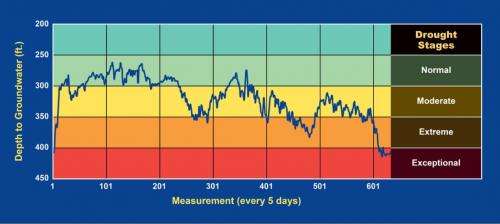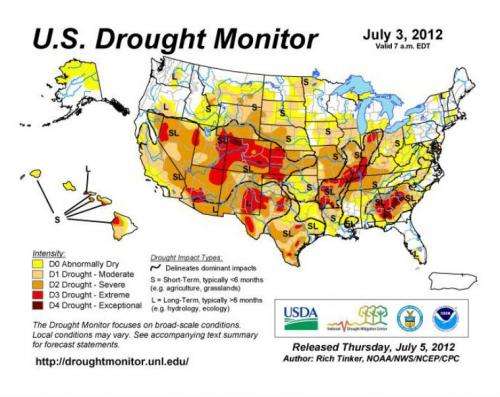Groundwater conservation through development of a drought plan

(Â鶹ÒùÔº)—The goal of a drought plan is to sustain water availability by reducing water use in response to drought or emergency conditions. Because emergency conditions can develop rapidly, responses must be enacted quickly. Consequently, drought plans need to be prepared in advance, considering conditions that will initiate and terminate the conservation measures.
Drought severity maps are insufficient indicators of local drought conditions. Common indicators such as the Palmer Drought Severity Index map can be informative of regional climatic trends, but are insufficient as indicators of local drought conditions. Environmental and hydrogeological indicators such as groundwater elevation, river-flow rate, spring discharge, and reservoir stage can provide more explicit and quantifiable drought triggers.

Designation of a quantifiable conservation (drought) trigger, such as groundwater elevation in a drought index well, provides communities with a transparent, easily understood measure of drought severity.
The Geosciences and Engineering Division of Southwest Research Institute (SwRI) has extensive experience in providing groundwater conservation districts with assistance to:
- Evaluate local hydrogeological conditions affected by drought
- Determine an appropriate drought indicator (e.g., monitoring well)
- Determine drought stages and pumping restrictions
- Determine appropriate conservation (drought) trigger levels
- Prepare drought plan documentation

Provided by Southwest Research Institute















